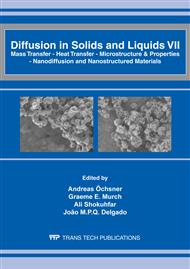p.440
p.446
p.452
p.459
p.465
p.471
p.477
p.482
p.488
Metal-Ceramic Composite Foams and their Fire Resistance
Abstract:
The development of aviation and outer space technologies necessitated working out new materials, resistant to increased temperatures, and satisfying specific requirements concerning high strength and low density. These requirements are met by metal composite materials produced by proper joining of the matrix (aluminium or magnesium alloys) and reinforcement components, mostly ceramic fibres, particles or whiskers. Such composite materials combine properties that traditional materials cannot yield. This contribution presents the method of composite foam production (SiC reinforcement, aluminium alloy matrix) by the mechanical method and testing of non-combustibility of these materials in accordance to the international FTP Code and the testing procedure PB-KTZ-01 (equivalent of ISO 1182).
Info:
Periodical:
Pages:
465-470
Citation:
Online since:
April 2012
Authors:
Price:
Сopyright:
© 2012 Trans Tech Publications Ltd. All Rights Reserved
Share:
Citation:


